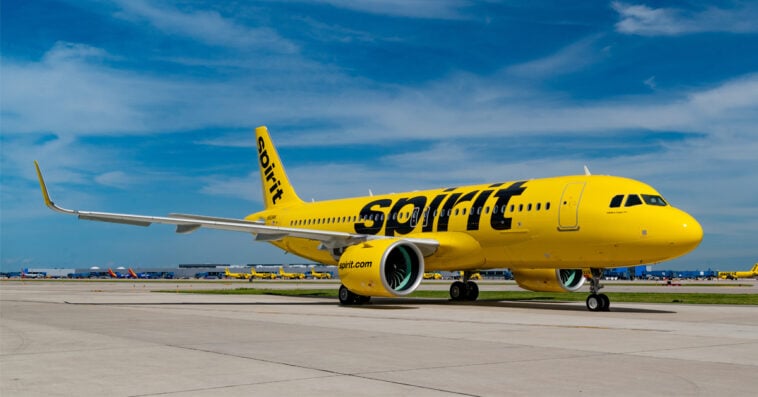Spirit Airlines is once again navigating turbulent skies as it returns to bankruptcy court, a move that raises fresh questions about the future of the nation’s largest low-cost carrier. After briefly emerging from financial distress earlier this year, the airline now finds itself back in Chapter 11 protection, signaling that its earlier recovery was far from smooth. If you’re planning your next trip, here’s what Spirit’s return to bankruptcy could mean for you.
Mounting losses and weak demand push Spirit back into Chapter 11
Spirit Airlines has once again sought Chapter 11 bankruptcy protection, filing on Friday after its cash reserves dwindled and losses mounted, undermining its fragile turnaround since leaving bankruptcy earlier this year. The budget carrier, instantly recognizable by its bright yellow aircraft, has struggled to regain stability since emerging from its initial restructuring in March.
In recent months, Spirit attempted to reposition itself with a more premium image, hoping to align with post-pandemic travel preferences that have increasingly tested the sustainability of the ultra-low-cost model. Yet, those efforts were further disrupted by the economic uncertainty stemming from President Donald Trump’s tariffs and federal budget cuts—factors that have cooled consumer spending and pushed domestic fares lower.
The mounting headwinds left Spirit raising doubts about its ability to continue operations earlier this month. Acknowledging the uphill battle, CEO Dave Davis stated, “Since emerging from our previous restructuring, which was targeted exclusively on reducing Spirit’s funded debt and raising equity capital, it has become clear that there is much more work to be done and many more tools are available to best position Spirit for the future.”
What does Spirit’s second bankruptcy mean for flyers?
For now, most travelers with upcoming trips on Spirit Airlines have little reason to panic. The carrier emphasized on Friday that flights, ticket sales, reservations, and daily operations will continue as normal. That means tickets you’ve already purchased remain valid, and flights in the coming days or weeks are not expected to be disrupted. Spirit’s bankruptcy filing is largely aimed at restructuring finances for investors and creditors rather than signaling an immediate shutdown.
One critical factor to watch is Spirit’s relationship with its credit card processor. Every time a traveler buys a ticket, the processor collects the payment before passing the money on to the airline. Because of Spirit’s weakened financial position, the processor may worry about the risk of the airline collapsing before a ticketed flight is taken. To protect itself, the processor could demand that Spirit set aside more collateral—essentially holding on to a bigger portion of ticket revenue up front. The airline has warned that this requirement could tie up its cash reserves, restricting the liquidity it needs to run operations smoothly. Spirit must renegotiate this agreement by December 31, 2025, a deadline that could shape its financial stability heading into 2026.
For travelers who feel uneasy, taking precautions can provide peace of mind. Travel insurance is an option, but not all policies cover airline bankruptcies unless they specifically include a “supplier failure” or “bankruptcy” clause. Another safeguard is paying with a credit card that offers strong travel protections, such as trip reimbursement if an airline ceases operations.
The rise, rebrand, and first fall of Spirit Airlines
Spirit Airlines traces its roots back to 1964, when it began as a long-haul trucking business before pivoting to aviation in the 1980s under the name Charter One Airlines, offering leisure travel packages. In 1992, the company rebranded as Spirit, carving out a niche as a no-frills carrier that appealed to budget-conscious flyers willing to forego extras like checked luggage and seat assignments in exchange for lower fares.
That model was severely tested by the pandemic, which reshaped consumer demand in favor of comfort and experience over bare-bones affordability. Spirit, like other ultra-low-cost carriers, struggled to adapt. By November 2024, after years of mounting losses, unsuccessful merger attempts, and rising debt, the Florida-based airline sought Chapter 11 bankruptcy protection—making it the first major U.S. carrier to do so since 2011.
Its financial fragility became especially clear after the collapse of a proposed merger with JetBlue Airways the previous summer. With losses piling up and creditors, including its credit card payment processor, pressing for improved liquidity, Spirit had little choice but to file for bankruptcy.
The airline emerged from Chapter 11 in March 2025 with reduced debt and a leaner balance sheet, yet profitability remained elusive. In the quarter ending June, it posted an operating loss of $184 million—$186 million when measured from the date it exited bankruptcy.
Determined to reposition itself, Spirit pursued higher-paying customers by revamping its Big Front Seat as “Spirit First,” rolling out bundled fare packages akin to those of full-service carriers, and adding a premium economy option with extra legroom. It also expanded routes from Belize to Tennessee and struck a partnership with regional operator Contour Airlines.
But even with these changes, Spirit was unable to escape the broader slowdown in domestic leisure travel. Within months, financial pressures mounted once again, driving the airline back into bankruptcy court for a second time.
Source: CNN

